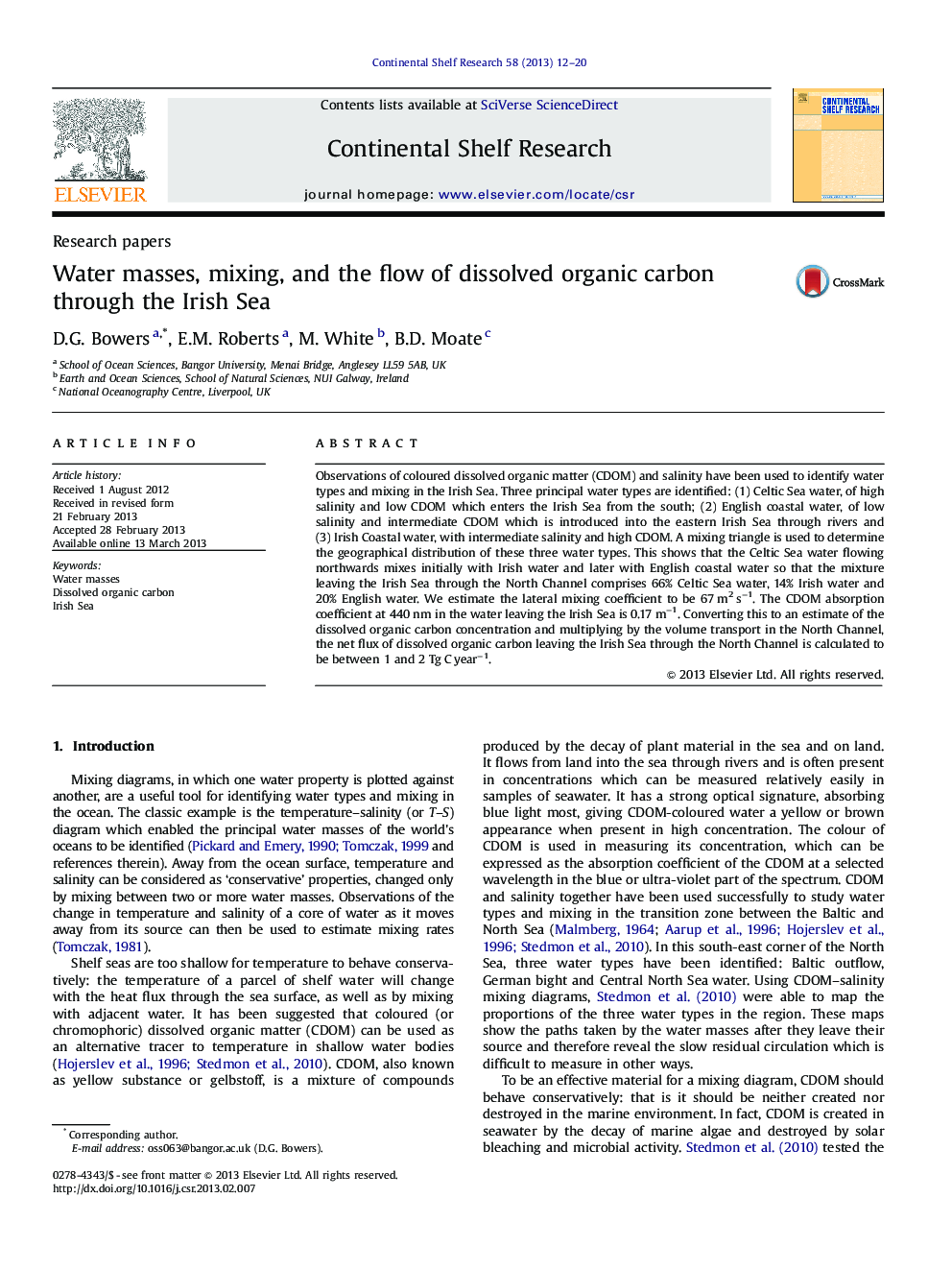| Article ID | Journal | Published Year | Pages | File Type |
|---|---|---|---|---|
| 4532224 | Continental Shelf Research | 2013 | 9 Pages |
•Salinity and CDOM are together used to identify the principal water masses of the Irish Sea.•Three water masses are identified: Celtic Sea water, English coastal water and Irish Coastal water.•As Celtic Sea water flows northwards it mixes with coastal water and becomes more coloured.•The distributions of the proportions of the three water types in the Irish Sea are presented as maps.•The net flux of dissolved organic carbon from the Irish Sea is estimated to be between 1 and 2 Tg year−1.
Observations of coloured dissolved organic matter (CDOM) and salinity have been used to identify water types and mixing in the Irish Sea. Three principal water types are identified: (1) Celtic Sea water, of high salinity and low CDOM which enters the Irish Sea from the south; (2) English coastal water, of low salinity and intermediate CDOM which is introduced into the eastern Irish Sea through rivers and (3) Irish Coastal water, with intermediate salinity and high CDOM. A mixing triangle is used to determine the geographical distribution of these three water types. This shows that the Celtic Sea water flowing northwards mixes initially with Irish water and later with English coastal water so that the mixture leaving the Irish Sea through the North Channel comprises 66% Celtic Sea water, 14% Irish water and 20% English water. We estimate the lateral mixing coefficient to be 67 m2 s−1. The CDOM absorption coefficient at 440 nm in the water leaving the Irish Sea is 0.17 m−1. Converting this to an estimate of the dissolved organic carbon concentration and multiplying by the volume transport in the North Channel, the net flux of dissolved organic carbon leaving the Irish Sea through the North Channel is calculated to be between 1 and 2 Tg C year−1.
